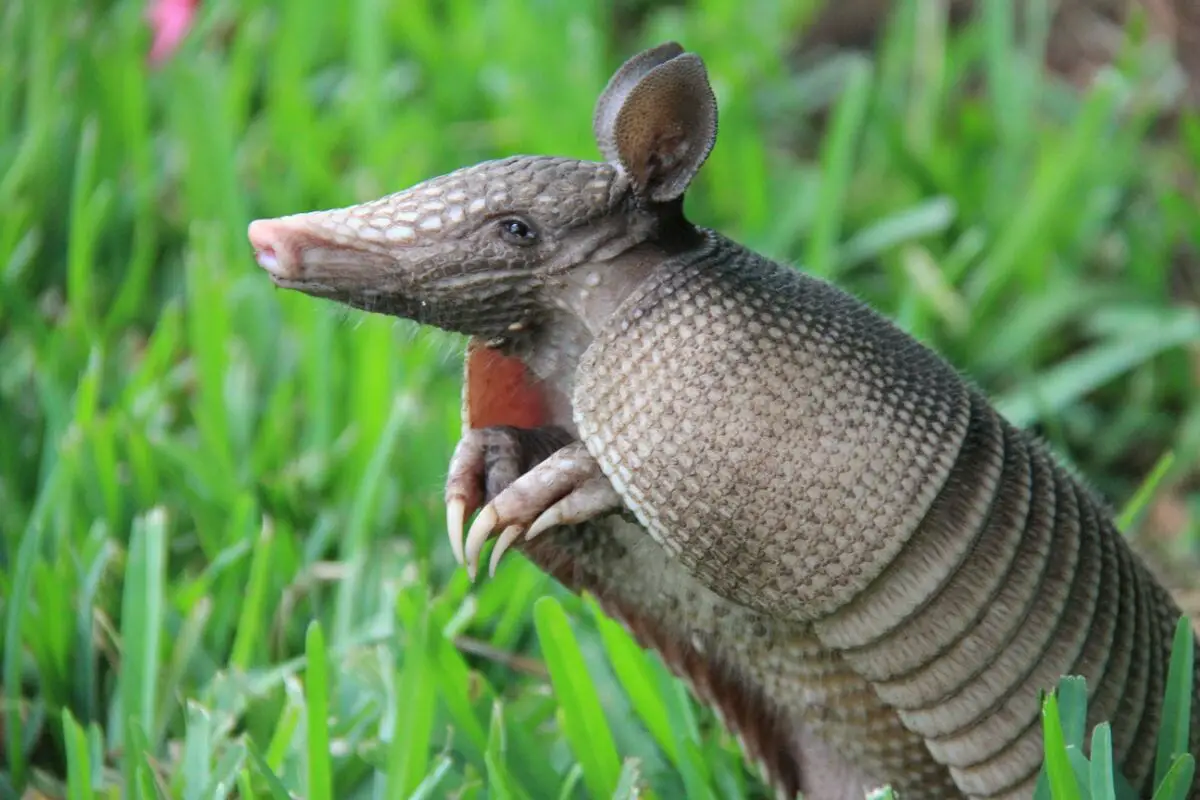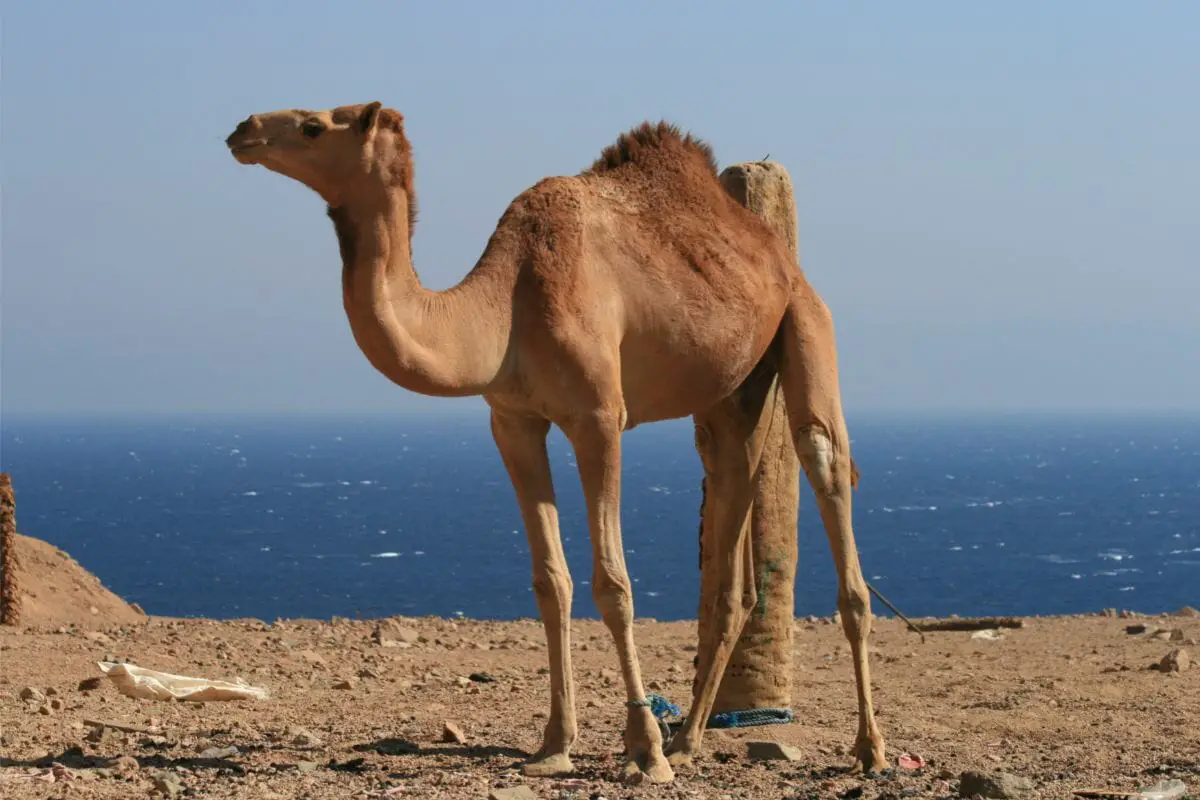Living in extreme heat is a challenge that not all animals can endure. The harsh conditions of hot climates, characterized by relentless sun and scarce water, pose significant survival hurdles. How do some animals manage to not just survive but thrive in such environments?
The secret lies in their incredible adaptations and behaviors. From camels with their fat-storing humps to jerboas that extract moisture from their food, these creatures have evolved unique strategies to beat the heat.
Understanding these adaptations not only fascinates animal enthusiasts but also offers insights into the resilience and ingenuity of nature. In this article, we will explore various animals that live in hot climates, detailing their survival tactics and the remarkable ways they overcome the challenges of extreme heat.

Armadillos
Armadillos live in hot climates, usually close to a water source. Armadillos have a very low metabolism and so do not store much fat in their body as a result. Therefore, they need to live in hot climates in order to survive.
However, they do not like it when it gets too hot. So, during these hours, they will sleep and then wake up when it is cooler, thus making them nocturnal.
Armadillos have bad eyesight but are very skilled at digging. They can carve burrows to protect themselves from both predators and heat. Some of us love hot climates, and some of us prefer the cold breeze of winter.
But, did you know that there are animals who love the hot weather too? Some have evolved to be able to survive in the heat, while some simply thrive in it.
In this article, we will take a closer look at the animals that live in hot climates. So, if you’re interested, read on for more!
Ostrich
The ostrich is a flightless bird native to Africa. They use thermoregulation techniques in order to maintain a consistent body temperature.
For example, they will use its plumage to cover its skin from the sun. Not only that, but ostriches stay hydrated through the water of the plants that they eat – they do not need to drink water directly!
Rhinoceroses
Rhinoceroses, known more commonly as “rhinos” are also a type of animal that lives (see also: Ten Types Of Animals That Live In Mexico) in a hot climate. Rhinos have facial horns and thick, mostly hairless bodies to help them fight the heat. Their horns also protect them from other mammals.

There are five species of rhino in the world, two live in sub-Saharan Africa and three live in Asia. Each of the five species have developed their own way of adapting to their respective environments.
For example, smaller species of rhinos like to stay in forests, while bigger species will live in open environments. Rhinos are typically herbivores and like to eat various fruits, leaves, trees, shrubs, and grasses. –
Camels
First on our list of animals that live in hot climates are camels! Camels live in dry and hot deserts all over the world, where temperatures during the day are very high, but temperatures at night are very low.
Armadillos like to eat insects, and they will find them by using their long tongues to fish them out of their tunnels.
Dorcas Gazelle
The Dorcas Gazelle is a type of antelope that lives in North Africa. It does not need to drink water at all, and never needs to urinate – it has everything it needs to survive from the food in its diet. Although, it will drink water from time to time when found.
The Dorcas gazelle can survive in very high temperatures. However, when the heat gets too extreme, it will only be active during the night until sunrise.
Dorcas gazelles like to eat fruit, branches, and leaves. They will also eat flowers, leaves, and pods from many kinds of Acacia trees.
African Wild Ass

African wild asses live throughout the northeastern parts of Africa and can survive in 120-degree weather! These animals have large ears that keep them cool even in the harshest of desert suns.
They can survive very harsh temperatures through their water intake, having the ability to drink a large volume of water in mere minutes.
Wild asses like to stay under shelter during the hottest parts of the day and are most active during the night when it is cooler.
Jerboa
The Jerboa looks a lot like a combination of a kangaroo and a mouse. You can usually find them in the Asian and African deserts.
Jerboas have long hind legs that help them to move efficiently and are able to dig in sand quickly, which provides a lot of protection from the heat. Jerboas can survive without water because they get plenty of moisture from the vegetation and insects that it feeds from.
Ruppell’s Fox
You can find the Ruppell’s fox in many deserts of the Middle East and North Africa. It has adapted to be able to survive in some of the harshest heats on the planet and is excellent at living in these high temperatures.
Ruppell’s fox has furred feet, meaning the sand while not scorch it as it is walking. Not only that, but its body can preserve water well.
Ruppell’s foxes have slow metabolisms and small bodies, which means it uses less energy throughout the day and thus can survive in the heat for longer.
Ruppell’s foxes do not like to hunt during the day. They like to hunt at night, and their diet primarily consists of birds, lizards, insects, beetles, and small mammals. They are omnivores, so they also like to eat dates and grass.
FAQs
What animals live in hotter climates?
Animals that thrive in hotter climates include camels, armadillos, ostriches, rhinoceroses, Dorcas gazelles, Ruppell’s foxes, African wild asses, and jerboas. These animals have developed unique adaptations to cope with extreme heat, such as fat storage, efficient water usage, and nocturnal habits.
What animal lives in the hot desert?
Camels are iconic desert dwellers, perfectly adapted to survive in hot, arid conditions. They store fat in their humps, lose minimal water through sweat, and have specialized feet for walking on sand. Other desert inhabitants include the jerboa, Ruppell’s fox, and the African wild ass.
How do animals survive in extreme heat?
Animals survive extreme heat through various adaptations such as nocturnal behavior, specialized body parts for heat regulation, and efficient water use. For instance, ostriches use their plumage for shade, while camels can store fat in their humps for energy.
What adaptations help animals live in hot climates?
Adaptations include storing fat (camels), having thick or specialized skin for temperature regulation (rhinoceroses, Ruppell’s fox), obtaining moisture from food (jerboas), and changing activity patterns to cooler times (armadillos, Dorcas gazelles). These adaptations are crucial for their survival.
Final Thoughts
There are many different kinds of animals that like to live in hot climates all over the world. These animals have very different techniques and adaptations for surviving in the hot weather.
For example, wild asses can lose a lot of water and survive, because they can drink large volumes of it within minutes. Meanwhile, animals like jerboas and ostriches find all the water they need to survive from the food in their diets, and do not need to drink it at all!
We hope you enjoyed learning about the different kinds of animals that live in hot climates.
- What Should I Do If A Koala Bites Me? Safety Guide - 2024-05-30
- Are Kangaroos Born Without Hind Legs? A Fascinating Journey - 2024-05-30
- Animals That Look Like Squirrels - 2024-05-30









